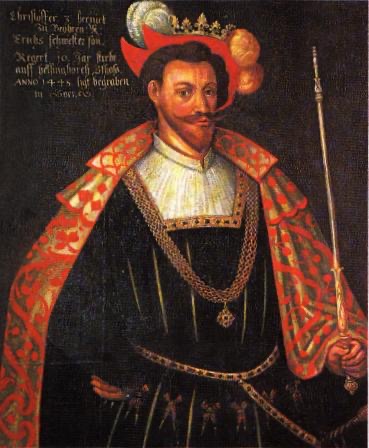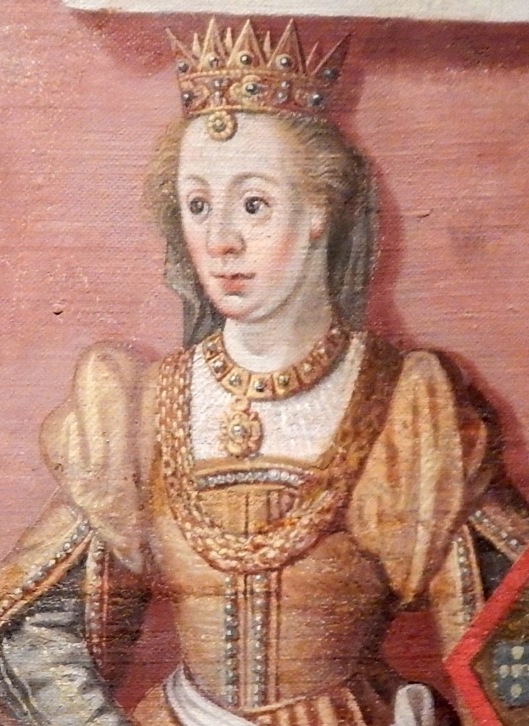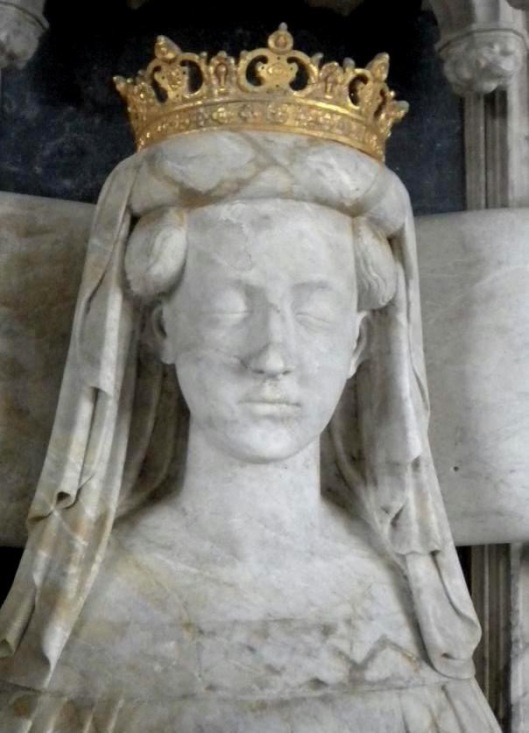Carl VIII of Sweden, (also Carl Knutsson) (c.1408/1409-1470), in reality King Carl II, and as Carl I of Norway,, was king of Sweden (1448–1457, 1464–1465 and from 1467 to his death in 1470) and king of Norway (1449–1450).

Carl VIII, King of Sweden and Norway.
Regnal name
Carl was actually the second Swedish king by the name of Carl. King Carl VIII is a posthumous invention and it was not contemporary to his time. His regnal number “VIII” was dirrived counting backwards from King Charles IX (r. 1604–1611) who adopted his numeral according to a fictitious history of Sweden.
The six others before King Charles VII (r. c. 1161-1167) are unknown to any sources before Johannes Magnus’s 16th century book Historia de omnibus gothorum sueonumque regibus, and are considered his invention. Carl was the first Swedish monarch of the name to actually use a regnal number as Carl II (later retrospectively renumbered VIII), on his queen’s tombstone (1451) at Vadstena.
Early life
Carl Knutsson was born in October 1408 or 1409, at Ekholmen Castle, the son of Knut Tordsson (Bonde), knight and member of the privy council (riksråd), and Margareta Karlsdotter, the only daughter and heiress of Carl Ulvsson, Lord of Tofta. His father Knut was first cousin of Erik Johansson Vasa’s father.
In 1434 Carl Knutsson became a member of the Privy Council of Sweden and in October of the same year he assumed one of its most senior offices, Lord High Constable of Sweden, or Riksmarsk. At this time Sweden was ruled by Eric of Pomerania (c.1381/1382-1459) was the ruler of the Kalmar Union from 1396 until 1439. He succeeded his grandaunt, Queen Margrethe I of Denmark, Norway and Sweden.
Eric of Pomerania is numbered Eric III as King of Norway (1389–1442), Eric VII as King of Denmark (1396–1439) and Eric XIII as King of Sweden (1396–1434, 1436–39). Later, in all three countries he became more commonly known as Eric of Pomerania which was a pejorative term intended to point out that he belonged elsewhere.

Eric of Pomerania
Because of the growing dissatisfaction with King Eric of Pomerania among the Swedish nobility, Carl was in 1436 made Rikshövitsman, an office equating to Military Governor of the Realm, and finally replaced the king as an elected regent from 1438 to 1440, as the result of the rebellion by Engelbrekt Engelbrektsson.
During Carl’s brief regentship, the so-called Rebellion of David (a peasant rebellion) took place in Finland. Eric of Pomerania was forced to step down from the throne and in 1440 Christopher of Bavaria, was elected king of Sweden, Norway and Denmark.
Christopher of Bavaria was the son of Johann, Count Palatine of Neumarkt (1383–1443) and Catherine of Pomerania (c. 1390–1426). Catherine was the daughter of Wartislaw VII, Duke of Pomerania in Pomerania-Stolp, and sister of the Scandinavian king, Eric of Pomerania. Count Palatine Johann was a son of King Ruprecht of Germany (1352–1410). 1352-1410), a member of the House of Wittelsbach, was Elector Palatine from 1398 (as Ruprecht III) and King of Germany (rex Romanorum) from 1400 until his death.
Christopher of Bavaria (1416-1448) was King of Denmark (1440–48, as Christopher III), Sweden (1441–48) and Norway (1442–48) during the era of the Kalmar Union.

Christopher III of Denmark, Norway and Sweden
At the coronation of Christopher of Bavaria as King of Sweden, in September 1441, Carl was dubbed a knight and appointed Lord High Justiciar of Sweden.
King of Sweden
At the death of Christopher in 1448, without a direct heir, which created a power vacuum, Carl Knutsson was elected King of Sweden on June 20, and on June 28, he was hailed as the new monarch at the Stones of Mora, not far from Uppsala, mostly due to his own military troops being present at the place, against the wishes of regents Bengt and Nils Jönsson (Oxenstierna).
However, in September 1448 the counts of Holstein made the Danish Privy Council elect Christian, Count of Oldenburg as King of Denmark. Christian was also Duke of Schleswig (within Denmark) and count (after 1474, duke) of Holstein (within the Holy Roman Empire). He was the first king of the House of Oldenburg. Christian was the eldest son of Count Dietrich of Oldenburg by his second wife, Helvig of Holstein
A rivalry ensued between Carl VIII and Christian for the throne of Norway, which had also been ruled by Christopher, with both kings gaining support from various factions in the Norwegian Council of the realm. In 1449 a portion of the Norwegian council elected Carl VIII King of Norway, and he was crowned in Nidaros Cathedral in Trondheim on 20 November. However, Christian also continued pursuing his claim to Norway. The Swedish aristocracy was reluctant to back Carl VIII in a war against Denmark over Norway, and already in 1450, Carl was forced to relinquish the throne of Norway in favour of Christian.

Christian I, King of Denmark, Norway and Sweden, Duke of Schleswig-Holstein and Count of Oldenburg.
From 1451, Sweden and Denmark were in state of war against each other. Because of devastating warring, a growing opposition against Carl emerged among the nobility in Sweden. The strongest opponent was the Swedish church which opposed Carl’s efforts to concentrate royal and secular power. Other opponents were the family group of Oxenstierna and the House of Vasa, which had been on the opposing side in the election of king and lost.
Later reigns
During the next 20 years, Carl VIII was deposed in Sweden twice, only to regain the throne and reign three times (1448–57, 1464–65, 1467–70).
In 1457, a rebellion took place, led by Archbishop Jöns Bengtsson (Oxenstierna) and a nobleman, Erik Axelsson Tott. Carl went into exile to Danzig (Gdańsk). The two leaders of the revolt took the regentship, and organized the election of Christian I of Denmark as king of Sweden (firstly in Turku, then in Stockholm).
In 1463, King Christian quarrelled with Archbishop Jöns Bengtsson because of his taxation policies. The Archbishop was imprisoned, which resulted in a rebellion by his relatives, and led to Christian being driven out of Sweden. Carl VIII was recalled by the rebels and returned at the head of a force of German and Polish mercenaries.
Upon arrival in Sweden he found also himself at war with Archbishop Jöns Bengtsson and after two bloody battles in the winter of 1464–1465 Carl VIII was again exiled. In 1467, the regent Erik Axelsson Tott, now having reverted to support Carl VIII once more had him crowned. Carl VIII then reigned for three years, sharing power with the Riksråd, until his death in Stockholm in May 1470.
Marriages
His first marriage, in 1428, to Birgitta Turesdotter (Bielke) (died 1436) gave him his daughter Christina, (Bonde) (ca 1432- before 1500), married 1446 to the noble, councillor, and courtier Erik Eriksson (Gyllenstierna). Carl VIII and Birgitta Turesdotter had one son, Ture Karlsson (Bonde) (died young before 1447).
Carl VIII’s second marriage, in 1438, was to Catherine Karlsdotter (Gumsehuvud, died in 1450) the daughter of the nobleman Karl Ormsson. This union produced his second daughter Magdalena, who married Ivar Axelsson (Tott). Before their marriage, dispensation was obtained from Pope Eugene IV (r.1431-1447), as Catherine was related to Carl’s first wife. This was to ensure that children born in the marriage would be regarded as legitimate.

Coat of Arms of Carl VIII of Sweden.
The marriage is described as very happy and resulted in nine children. It was said that “Their relationship had always been of the best kind”. Their second daughter, Magdalene, married Ivar Axelsson (Tott), an uncle of Ingeborg Tott.
Queen Catherine was described as beautiful and cheerful; she created a nice environment and a relaxed atmosphere at court, and she was forthcoming to those who came seeking audience.
In 1450, she became one of many who died of the plague in Stockholm, and was deeply mourned by the king. She was buried in 1451 in Vadstena Abbey.
Four sons died early, of his four daughters, two became nuns, one never married. His only married daughter was Magdalena of Sweden (1445-1495). In 1468–1470, her spouse Ivar Axelsson (Tott) was the promised successor of her father as regent.
Carl VIII also had two children by his third wife (and former mistress) Christina Abrahamsdotter, Anna and Carl. The parentage of Christina Abrahamsdotter is not known, but she is believed to have been the daughter of Abraham Pedersson, governor of Raseborg. At the time of their meeting King Carl VIII of Sweden got to know her during his exile in Finland 1457–1464. When Carl returned to Sweden in 1464 and reclaimed the Swedish throne, she followed him there as royal mistress. In 1465, they had a son together, Carl Karlsson (Bonde) (1465–1488)
In 1470, during the last year of his life, when Carl married Christina. She thereby became queen, and her son became legitimate. The exact date of the marriage is unknown. Traditionally, the wedding was to have taken place on his deathbed. The marriage took place on an unknown date during the spring of 1470, a few weeks before the death of Carl in May. The wedding is said to have taken place in Stockholm with 50 wedding witnesses. Their daughter, Anna Karlsdotter (Bonde), was married to the noble Håkan Svensson (Bölja), governor of Västerås castle.
Legacy
Carl VIII represented a growing nationalist tendency among the Swedish aristocracy which tried first to subjugate the other Scandinavian countries under Sweden but soon focused on dissolving the Kalmar Union. In the next century, when the union was finally dissolved, Carl received some respect as an early champion of Swedish independence.
Carl’s great-granddaughter Christina Nilsdotter Gyllenstierna was married to Sten Sture the Younger whose regentship of Sweden represented similar values: nationalism and Swedish independence.
Though the Bonde family, not descendants of Carl VIII himself but just his collateral relatives, remained prominent among the Swedish nobility and in politics into the 20th Century, Charles’s own descendants did not ascend nor inherit any thrones until Prince Christian of Schleswig-Holstein-Sonderburg-Glucksburg became Christian IX of Denmark in 1863. Carl VIII’s descendants have since ascended the thrones of Norway, Greece and Great Britain.
His distant direct descendant, Princess Sibylla of Saxe-Coburg-Gotha married the Hereditary Prince Gustaf Adolf of Sweden, Duke of Västerbotten, in the 20th century, and with Sibylla and Gustaf Adolf‘s son, King Carl XVI Gustaf of Sweden, Carl VIII’s blood returned to the Swedish throne.


















